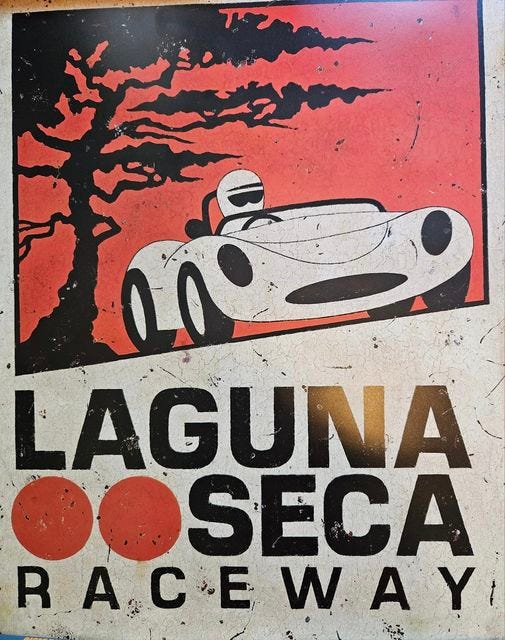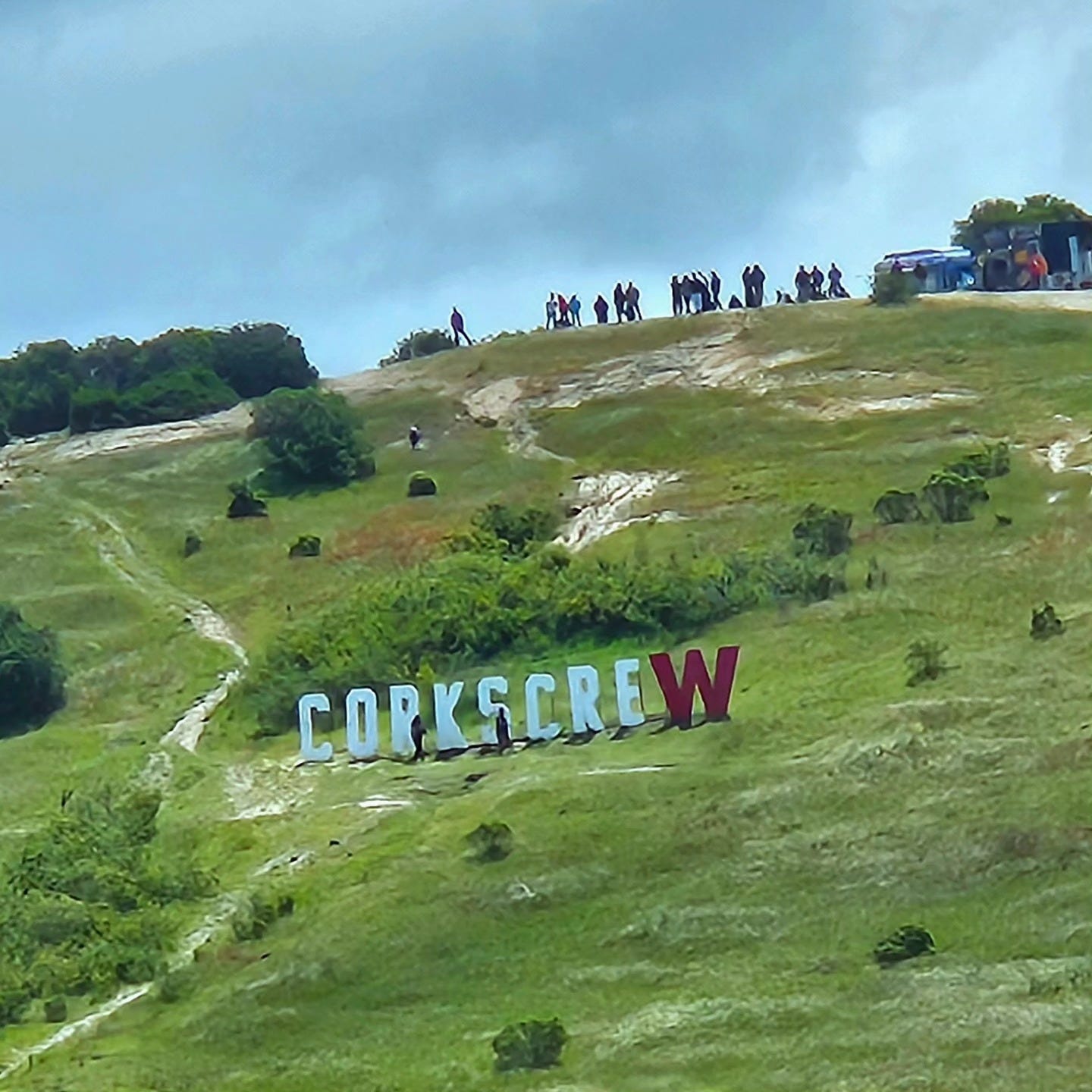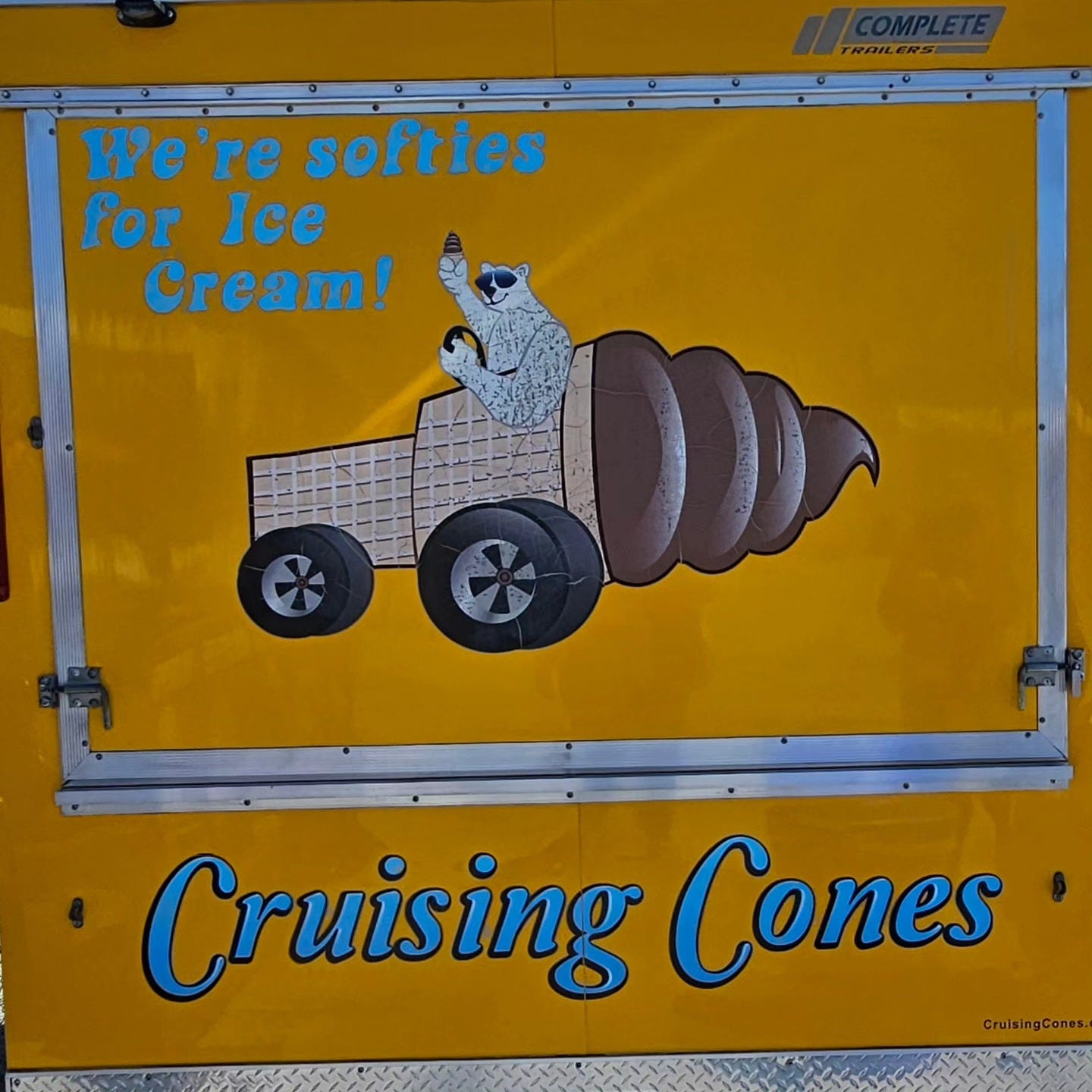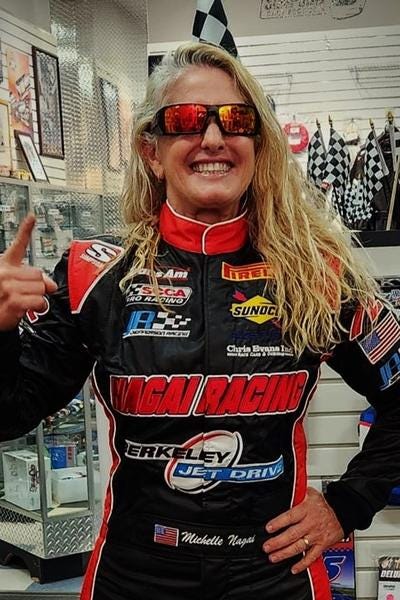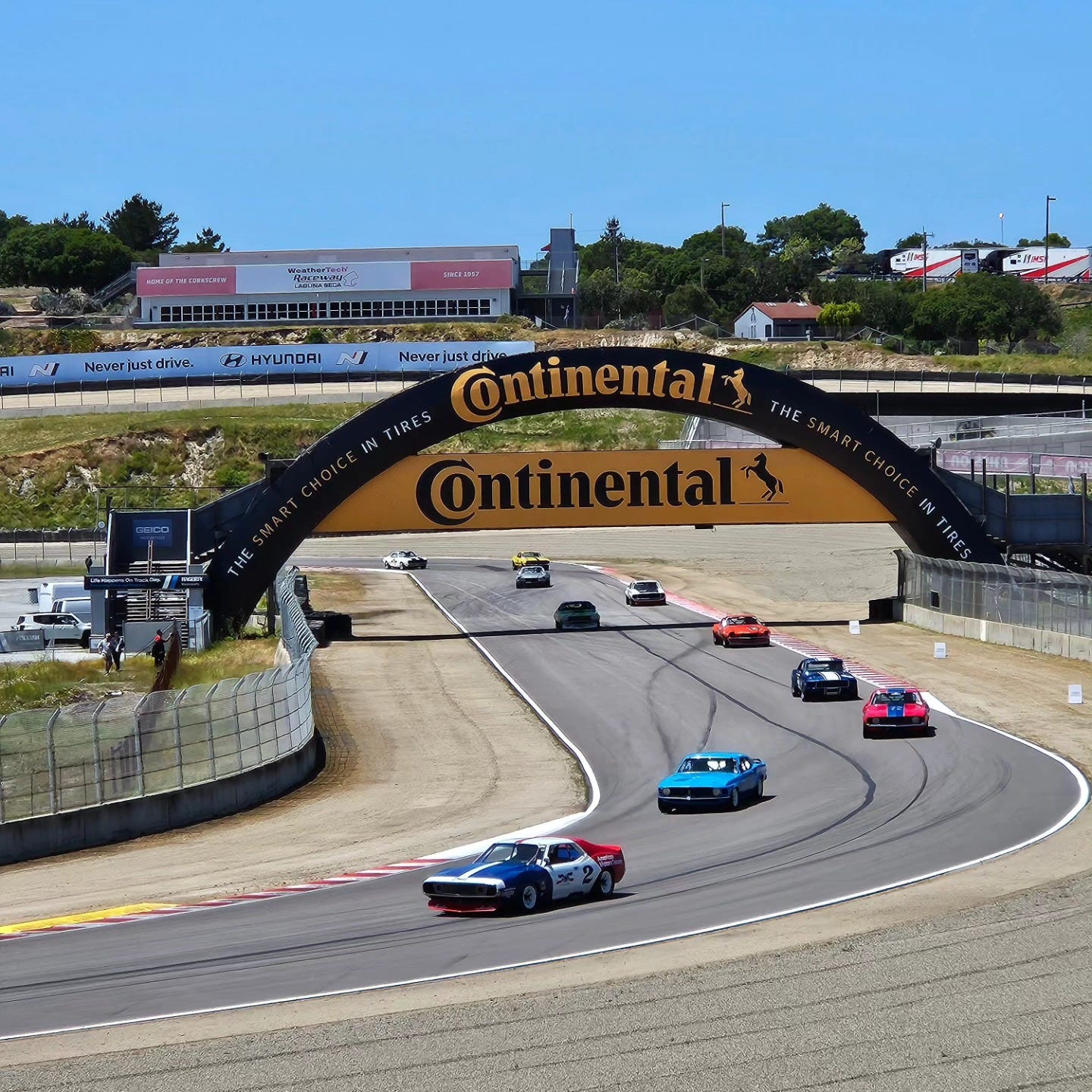There's a part in the book "Cheaper By The Dozen" where the Dad is said to have directed dinner conversation by cutting off boring recitals of personal woes and gossip by saying, "Not of General Interest." Apparently, he only liked conversations about facts. I wonder what he would have thought about conversations at the Arnold dinner table circa 1970, when my brother would recite at length the names of famous race cars, famous races, and famous race car drivers, with all their data. Is that of general interest?
Perhaps not to everyone, but in our family, race-car mania was a longstanding obsession in which my brother was much encouraged, and which I joined in on in a babyish way, because I liked everything he did - a trait which only ended with his late-teen embracement the Grateful Dead. But car-racing was way cooler than hippie-shit, at least in the 1960s, when, as with much about the '60s entertainment, it was the golden age, whence its practitioners used new technologies to push the boundaries of speed and sound. In those days being a race car driver was super glamorous, like being an astronaut or a rock star, only without the scary drugs. So I loved Jackie Stewart and Jim Clark and Graham Hill, and my brother loved all their cars. His best friend had a kitten named Shelby Cobra, and he collected match box Lotuses in the same way that I collected plastic horsies.
Cars in the olden days may not have been faster but they were cooler and nicer looking than they are now, and racing them was much, much, more glamorous. I’m not talking about NASCAR racing – going round and round an oval, but F1 and TransAm and production cars from various car companies that were hopped up by the experts for experimental purposes. What the two of them really liked was Grand Prix racing, but my father also would take my brother to speed trials and car races at places like the parking lot of Candlestick Park and the Vaca Valley speedway, and of course, to Laguna Seca, where they would watch the giants of racing dash up the and down the famous Corkscrew, and sometimes (though I barely remember it) I went along. There are no dangerous races in the parking lots of stadiums anymore, and Vacaville speedway is a shopping mall, but Laguna Seca still exists, saved from land development by rich people as a nature conservancy and renamed WeatherTech Raceway, and my brother and I went there on Saturday for the first TransAm races of the season.
Laguna Seca is a 2.2 mile race track nestled in the heart of the Carmel Valley. It was originally part of Fort Ord, and in addition to its primary use, it has been used in the past twenty or thirty years for a Grateful Dead Concert, a visit from the Pope, and the mass high school graduation-during-Covid of every high school in the Central California. But its main thing is, it's a racetrack, with its harder parts recreated in the video game Gran Turismo, among other things. When I was there last week, I tried to imagine it as the site of a giant rock festival, and while it would be good in one way - built-in power and parking and bathroom infrastructure -- it would also be a nightmare. But then, aren't all rock festivals? It's a weird thing, that people still love going to them. I wrote a book about that, come to think of it! And it makes me wonder if my interest may have stemmed from going to Laguna Seca in 1968, and being hauled up this hill to watch something insanely noisy in the midst of the vast crowds which used to frequent this site.
What's cool about it is, it is more or less the same as it used to be, only just a little bit better. First, they've put in a big, huge hairpin curve — the Andretti Hairpin -- and they now let you walk in the pit area - or at least, they did at this race. Second, there are these golf carts that will drive you up to the top of the Corkscrew and take you back (and since I'm still a cripple, that's important.) When we were little, we had to schlep it, even I remember that. And third: food trucks.
Honestly, it may be the only thing I've been to in forty years that's been made better by progress and not worse. It is also probably the only thing like that I've been to where there weren't crowds making it all hot and obnoxious. In fact, for this race it was pretty sparsely attended, and it was such a wonderful thing to be at a place not spoiled by crowds. We forget how much population growth has made entertainment sites so unpleasant, but most things one goes to now are kind of like voluntarily thrusting yourself into a sardine run off South Africa, the 60,000 followers who had to trudge along behind Napoleon, or an especially chaotic refugee camp.
This was the opposite of that. And what about the actual races, I hear you cry. Well, we watched 6 races, some from the top of the Corkscrew, one from the grandstand, and the rest from the seats at Andretti Curve. Corry most wanted to see the race with the vintage Trans-Ams – known as HTA (Historic TransAm) because those were the ones he liked best when he was little. As the parade of old Camaros and such went by, I said, "So I guess it’s like seeing the Who?" And he said, no, because the same racers weren't driving. "It's more like seeing a Who concert which uses the exact same equipment and amplifiers that were used in the original setting."
Anyway, that was his favorite race but mine was the more high-powered TransAms, the 850 horsepower, series. I can't tell you who won, but I can tell you who lost, because I'm still mad about it, and that is, Michelle Nagai, who led for 27 (of 40) laps, who happened to be THE ONLY WOMAN. You'd think after 50 years we'd be beyond gender in this sport, but we absolutely are not so I was super excited to see her controlling the field, lap after lap after lap. We were watching from the grandstand, meaning the straightaway where they'd step on it, and every time they came round, she was still ahead by about a car length, meaning she'd taken every curve perfectly...but it was a little nerve-wracking, awaiting the pack’s arrival every 90 seconds.
Michelle kept her lead even after a yellow flag (accident on course) had the field circling in order for three laps - that's when everyone can catch up. But when it happened a second time, they all bunched up behind her and then, right past the place where we could see what was happening, they apparently forced her into a spin-out.
We saw the dust rising from beyond the hairpin, and I became distraught.
Corry shrugged and said, "That's racing," but I thought she was robbed.
I told you: not of general interest! But I am on a quest to find things to write about other than music, and as I said, I think this may be the fount of our interest in going to giant rock concerts, which in about 1976 overtook car racing as our boring topic of choice to natter on about around the dinner table. I also wonder if there is something about the latter part of the 20th century which lent itself to pursuits which required memorizing the intricate names and brands and labels of things, and then finding ways to see them in person. As far back as 1912, Gustav LeBon called the 20th century "the era of crowds," and I am certainly someone who both benefited and enjoyed becoming one with them. Going to Laguna Seca feels like a relic of those times, when being on top of a hill looking down at a man-made spectacle of steel machinery at work gave one a warm and fuzzy feeling -- rather than the dread and nausea that such endeavors now raise in my breast.
So, so much for Lollapalooza. It could just be nostalgia on my part, but driving the course in a golf cart which was blasting out the song “Barracuda” by Heart whilst eating a soft serve ice cream cone covered in colored sprinkles is now my beau ideal of American pageantry.
(Unlike the circus, I am not necessarily recommending you go to Laguna Seca this summer, but if you do, note that despite fairly nice weather, it was windy, cold, and insanely noisy on that hill, so make sure you bring ear plugs or noise cancelling headphones, sunblock and a ton of jackets. I forgot all those things, but I have survived to tell the tale.)




